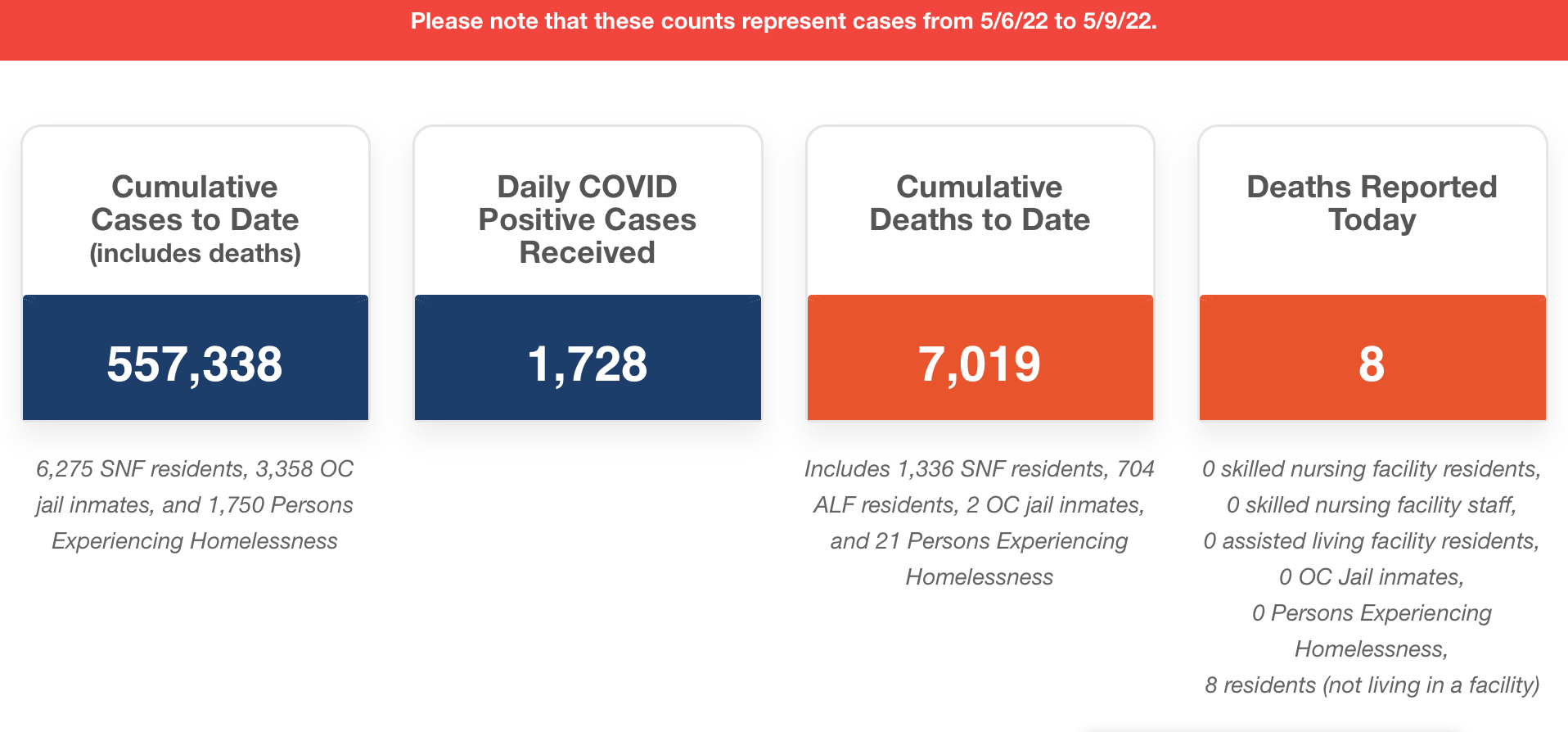Orange County’s COVID-19 hospitalizations and infection rates continued climbing, according to data released Tuesday by the Orange County Health Care Agency.
The county’s COVID-related hospitalizations reached 101 as of Monday, with 17 patients in intensive care, according to the most recent data available. On Friday, there were 94 hospitalized, and that number jumped to 108 Saturday and 117 by Sunday. The ICU patients have climbed from 14 since Friday, according to the agency, which provides updates on Fridays and Tuesdays.
The county has 36.8% of its ICU beds available, well above the 20% level when officials become concerned.
Of those hospitalized, 83.2% are unvaccinated, and that rate is at 86.3% in intensive care units.
“There’s another wave starting, I’m quite confident of it,” Andrew Noymer, an epidemiologist and UC Irvine professor of population health and disease prevention, told City News Service on Friday.
“I said if we got 100 patients and up, that would be significant, and 200 and up would be a full-blown wave, and we’re at almost 100,” Noymer said. “We’re building toward a new wave. We’re very close to a significant increase in COVID. … But no one can say what the high-water mark of that wave will be.”
Easter gatherings likely didn’t help, but Noymer said there are many causes to COVID-19 surges now.
“We’ve got these new variants working around” that are more contagious, Noymer said. “Part of what we’re seeing here is there’s a new variant, and getting vaccinated doesn’t prevent infection, and getting (infected) doesn’t prevent infection, so what does prevent infection? Wearing a mask helps, and getting lucky. … I don’t think you can just say this is Easter. With a virus this contagious, it’s just society being society is what causes this.”
Noymer said he “highly recommends” wearing a mask to stores and indoor events as well as outdoor events with large crowds.
The daily case rate per 100,000 people in Orange County increased from 9.7 Friday to 10.8 on a seven-day average with seven-day lag, and from 6.1 to 7.5 for the adjusted rate with a seven-day average and seven-day lag.
The testing positivity rate went from 3% to 3.3% overall and from 1.3% to 1.4% in the health equity quartile which measures the communities hardest hit by the pandemic.
Those statistics can be deceiving, Noymer said.
“With testing so far down and people doing at-home tests, hospitalizations is some of the only data we have,” Noymer said.
The county logged 1,728 more COVID-19 infections, raising the cumulative case count to 557,338. Eight new fatalities increased the death toll to 7,019.
Three of the fatalities occurred last month, raising April’s death toll to 28. One happened in March, raising that month’s death toll to 86.
Two of the COVID-19 fatalities occurred in February, raising that month’s death toll to 329. January’s death toll stands at 554, 115 in December, 121 in November, and 138 in October. One fatality occurred in September, increasing that month’s death toll to 206. Three deaths occurred in August, increasing that month’s death toll to 201.
The case rate per 100,000 for fully vaccinated residents who have received a vaccine booster dropped from 12 as of April 29 to 10.6 as of May 6, the latest data available show. The case rate for residents fully vaccinated with no booster decreased from 7.3 to 6, and the case rate for residents not fully vaccinated dropped from 11.9 to 10.8.
The number of vaccines administered in Orange County increased from 2,304,729 last week to 2,310,731, according to Tuesday’s data.
That number includes an increase from 2,164,061 to 2,170,180 residents who have received the two-dose regimen of COVID-19 vaccines from Pfizer or Moderna.
The number of residents receiving the one-dose Johnson & Johnson vaccine decreased from 140,668 to 140,551 as officials continue to adjust to a new accounting of shots administered in the counties across the state.
Booster shots decreased from 1,280,690 to 1,273,356.
In the most recently eligible age group of 5 to 11 years old, the number of children vaccinated increased from 89,800 to 90,228, versus 178,352 who have not been vaccinated. It’s the least-vaccinated age group in Orange County.
“The urgency is gone, the message from the government isn’t ‘Vaccinate, vaccinate’ anymore,” Noymer said.
Vaccines are still the best way to protect against severe illness and hospitalization, Noymer said.
“If we’re talking about protection from infection at all, they’re clearly waning,” Noymer said. “But with protection from severe infection, they have staying power.
“The devil is in the details in terms of you can still get a bad cold, but it will be COVID if you’re vaccinated, and the bad news is you can still spread it. But are you likely to be on a ventilator in a hospital? That’s much less. Vaccines are still holding their ground, but not for transmission.”
The Omicron subvariants of COVID-19 are “in the ballpark” of contagiousness as measles, Noymer said.
Noymer said he was “very disappointed” mRNA vaccines have not been upgraded to tackle the subvariants.







